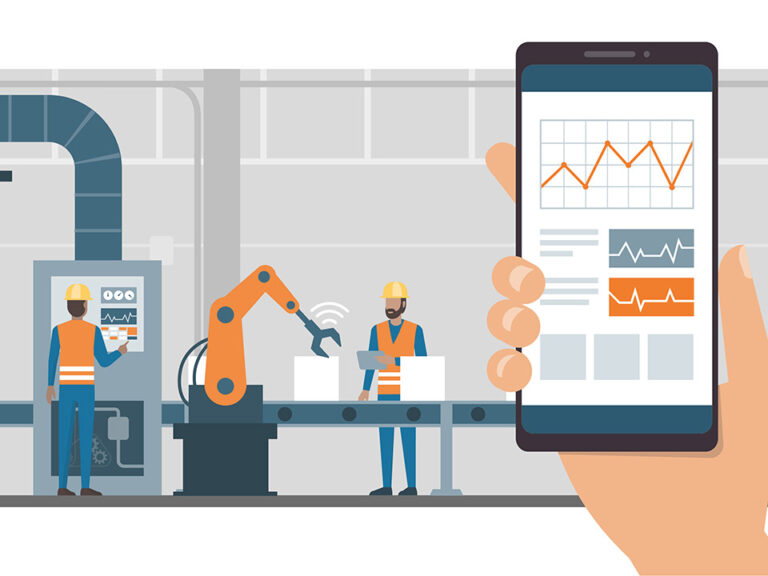Transforming Supply Chain Management with Advanced Automation Solutions.
In an era where operational efficiency and customer satisfaction are paramount, the integration of advanced automation solutions into supply chain management has become a game-changer. By improving visibility, optimizing inventory management, and streamlining logistics operations, automation, powered by artificial intelligence (AI) and robotic process automation (RPA), is transforming processes from procurement to delivery. This article examines how automation technologies are transforming and advancing them toward a future with unparalleled efficiency and dependability.
Introduction to Supply Chain Automation
The advent of automation in supply chain management represents a pivotal shift in how businesses approach their supply chain operations. With the global supply chain facing unprecedented challenges, including disruptions and increasing consumer demands, automation stands as a beacon of innovation, offering solutions that promise not only to address these challenges but also to propel supply chains into a new era of operational excellence.
The Role of AI and Machine Learning
Enhancing Forecasting and Decision-Making
AI and machine learning play a crucial role in transforming supply chain management by providing valuable insights that significantly improve forecasting accuracy. These advanced technologies analyze large volumes of data to predict disruptions before they occur, allowing businesses to make informed decisions proactively rather than reactively.
Streamlining Inventory Management
Automation technologies, including AI-powered systems, have revolutionized inventory management. By autonomously monitoring stock levels and predicting future inventory requirements, these systems ensure optimal stock levels are maintained, thereby reducing the risk of overstocking or stockouts and enhancing operational efficiency.
The Impact of Robotics and RPA
Automating Repetitive Tasks
Robotic Process Automation (RPA) and robotics are transforming supply chain operations by automating repetitive tasks such as data entry, order management, and even aspects of customer service. This automation significantly reduces human error, increases productivity, and allows professionals to focus on more strategic tasks.
Revolutionizing Warehouse Operations
In the warehouse, robotics and automation tools are being employed to automate picking, packing, and sorting processes. These technologies not only speed up warehouse operations but also improve accuracy and reduce the physical strain on warehouse workers, leading to improved worker satisfaction and retention.
Predictive Analytics and Advanced Analytics
Providing End-to-End Supply Chain Visibility
Predictive analytics and advanced analytics offer a comprehensive view of the entire supply chain, from supplier to customer. This visibility is crucial for identifying bottlenecks, optimizing delivery routes, and ensuring timely delivery of products. Furthermore, it enables businesses to anticipate customer demands, thereby improving customer satisfaction.
Optimizing Supply Chain Processes
Through the use of predictive analytics, supply chains can now optimize their operations by accurately forecasting demand, thereby reducing waste and improving efficiency. This not only ensures that functions are more sustainable but also that they are capable of meeting the evolving needs of the market.
FAQs
How does automation improve supply chain management?
Automation improves management by enhancing operational efficiency, reducing errors, increasing visibility, and enabling predictive decision-making.
- Operational Efficiency: Automation streamlines various processes within the supply chain, such as order processing, inventory management, and transportation logistics. This eliminates manual tasks that are time-consuming and prone to errors, leading to faster and more accurate operations.
- Error Reduction: With automation, the likelihood of human errors in data entry, order fulfillment, and inventory tracking is significantly reduced. This helps to minimize costly mistakes and delays.
- Increased Visibility: Automation tools provide real-time data on inventory levels, order statuses, and shipment tracking, offering greater visibility into the entire supply chain. This allows companies to make informed decisions and respond quickly to any disruptions or changes in demand.
- Predictive Decision-Making: Automation tools can analyze historical data and use predictive analytics to forecast future demand, optimize inventory levels, and improve planning. This enables companies to proactively address potential issues and stay ahead of market trends.
Overall, automation in supply chain management leads to improved efficiency, accuracy, and responsiveness, ultimately driving cost savings and enhancing customer satisfaction.
Can automation in supply chains reduce costs?
Yes, by optimizing inventory levels, streamlining processes, and reducing manual labor, automation can significantly cut costs. Automated systems can enable more efficient order processing, inventory management, and shipment tracking, leading to reduced labor costs and lower error rates. Automated systems can also analyze data in real-time to identify inefficiencies and opportunities for cost savings.
Additionally, automation can help reduce lead times, minimize stockouts and overstock situations, and improve overall visibility. By streamlining operations and improving accuracy, businesses can avoid costly delays, errors, and excess inventory holding costs.
Overall, by implementing automation in supply chains, businesses can achieve cost savings through improved efficiency, reduced labor expenses, and better decision-making processes.
What are the challenges of implementing automation in supply chains?
Challenges include the initial cost of technology adoption, integrating new systems with existing operations, and managing change within organizations. Other challenges of implementing automation include:
- Resistance to change: Employees may resist the implementation of automation due to fear of job loss or a belief that the new technology may disrupt established workflows.
- Lack of skilled workforce: Implementing automation requires employees who are trained to operate and maintain the new technology. Companies may struggle to find or train employees with the necessary skills.
- Data security concerns: Automation in supply chains requires large amounts of data to be collected and analyzed. This raises concerns about data security and the potential for cyber threats.
- Complexity of integration: Integrating automation technologies with existing systems and processes can be complex and time-consuming. It may require significant planning and coordination to ensure a smooth transition.
- Scalability: Implementing automation may be challenging for smaller companies due to the high upfront costs and the need for significant infrastructure investment.
- Regulatory compliance: Automation in supply chains may raise regulatory compliance concerns, especially in industries with strict regulations around data privacy and security. Companies must ensure that their automation systems comply with relevant regulations.
- Maintenance and reliability: Automation systems require regular maintenance to ensure they operate efficiently. Companies must consider the costs and resources required to maintain and repair automation technologies.
How does AI enhance supply chain forecasting?
AI enhances supply chain forecasting by analyzing historical data and identifying patterns to predict future needs and potential disruptions. This allows for more accurate demand forecasting, inventory management, and production planning, which ultimately leads to more efficient operations. AI can also help identify potential risks and opportunities in the supply chain, allowing companies to proactively plan for and mitigate any potential disruptions. Additionally, AI can automate the forecasting process, saving time and resources and allowing companies to make faster and more informed decisions. Overall, AI enhances supply chain forecasting by providing more accurate and timely insights, optimizing operations, and ultimately improving performance.
Is automation in supply chains only beneficial for large businesses?
No, businesses of all sizes can benefit from automation in supply chains, as it offers scalable solutions that can be tailored to specific needs and budgets. Automation can help small businesses improve efficiency, reduce costs, minimize errors, and streamline operations. It can also improve inventory management, enhance transparency and traceability, and provide real-time insights for better decision-making.
Additionally, automation can help small businesses compete with larger companies by offering the same level of efficiency and productivity. By automating routine tasks, small businesses can free up time and resources to focus on strategic planning, customer service, and innovation.
Overall, automation can benefit businesses of all sizes by increasing productivity, reducing costs, improving accuracy, and enhancing competitiveness in the market.
Conclusion
The integration of advanced automation solutions into management is not just a trend but a transformation that is reshaping the landscape of global supply chains. By leveraging AI, machine learning, robotics, and RPA, businesses can enhance efficiency, improve accuracy, and ensure customer satisfaction, thereby securing a competitive edge in the market. As the evolution of supply chain automation continues, businesses that embrace these technologies will find themselves at the forefront of the modern era, ready to meet the challenges of an increasingly complex and dynamic marketplace.
Interested in exploring more about how automation and AI are revolutionizing various industries? Read our articles to delve deeper into the world of advanced technologies and their impact on business operations and strategies.






